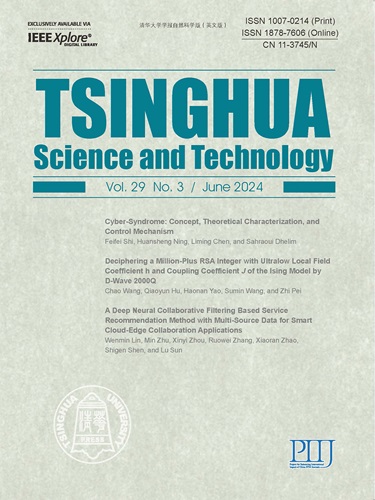Call for Papers: Special Issue on Neural Networks Depicted in ODEs with Applications
IF 6.6
1区 计算机科学
Q1 Multidisciplinary
引用次数: 0
Abstract
With the exponential growth in data availability and the advancements in computing power, the importance of neural networks lies in its ability to process large-scale data, enable automation tasks, support decision-making, etc. The transformative power of neural networks has the potential to reshape industries, improve lives, and contribute to the advancement of society as a whole. Neural networks depicted in ordinary differential equations (ODEs) ingeniously integrate neural networks and differential equations, two prominent modeling approaches widely applied in various fields such as chemistry, physics, engineering, and economics. Serving as equations that describe the relationship between a class of functions and their derivatives, ODEs possess rich mathematical analysis methods and are thus integral tools in classical mathematical theory. Neural networks depicted in ODEs leverage the differential equation description of physical processes, combining it with the potent fitting capabilities of neural networks. In contrast to traditional neural networks that overlook physical information and rely solely on numerous neurons for fitting, neural networks depicted in ODEs can achieve more accurate estimates with fewer neurons, while maintaining robustness, generalization, and interpretability in the learned systems. To fulfill the powerful potential of robots, plenty of algorithms based on neural networks depicted in ODEs are researched to simulate human-like learning processes, realize decision-making tasks, and address the issues of uncertain models and control strategies. Robots have great application value in the fields of artificial intelligence, information technology, and intelligent manufacturing due to their efficient perception, decision-making, and execution capabilities.论文征集:关于用 ODEs 描述的神经网络及其应用的特刊
随着数据可用性的指数级增长和计算能力的进步,神经网络的重要性在于它能够处理大规模数据、实现自动化任务、支持决策等。神经网络的变革能力有可能重塑产业、改善生活并促进整个社会的进步。常微分方程(ODE)中描绘的神经网络巧妙地将神经网络和微分方程这两种广泛应用于化学、物理、工程和经济学等各个领域的著名建模方法结合在一起。作为描述一类函数及其导数之间关系的方程,常微分方程拥有丰富的数学分析方法,因此是经典数学理论中不可或缺的工具。用 ODE 描述的神经网络充分利用了微分方程对物理过程的描述,并将其与神经网络强大的拟合能力相结合。传统的神经网络忽略了物理信息,仅依靠大量神经元进行拟合,与之相比,用 ODE 描述的神经网络可以用更少的神经元实现更精确的估计,同时保持所学系统的鲁棒性、泛化和可解释性。为了发挥机器人的强大潜能,人们研究了大量基于 ODE 神经网络的算法,以模拟类似人类的学习过程,实现决策任务,并解决不确定模型和控制策略的问题。由于机器人具有高效的感知、决策和执行能力,因此在人工智能、信息技术和智能制造领域具有巨大的应用价值。
本文章由计算机程序翻译,如有差异,请以英文原文为准。
求助全文
约1分钟内获得全文
求助全文
来源期刊

Tsinghua Science and Technology
COMPUTER SCIENCE, INFORMATION SYSTEMSCOMPU-COMPUTER SCIENCE, SOFTWARE ENGINEERING
CiteScore
10.20
自引率
10.60%
发文量
2340
期刊介绍:
Tsinghua Science and Technology (Tsinghua Sci Technol) started publication in 1996. It is an international academic journal sponsored by Tsinghua University and is published bimonthly. This journal aims at presenting the up-to-date scientific achievements in computer science, electronic engineering, and other IT fields. Contributions all over the world are welcome.
 求助内容:
求助内容: 应助结果提醒方式:
应助结果提醒方式:


